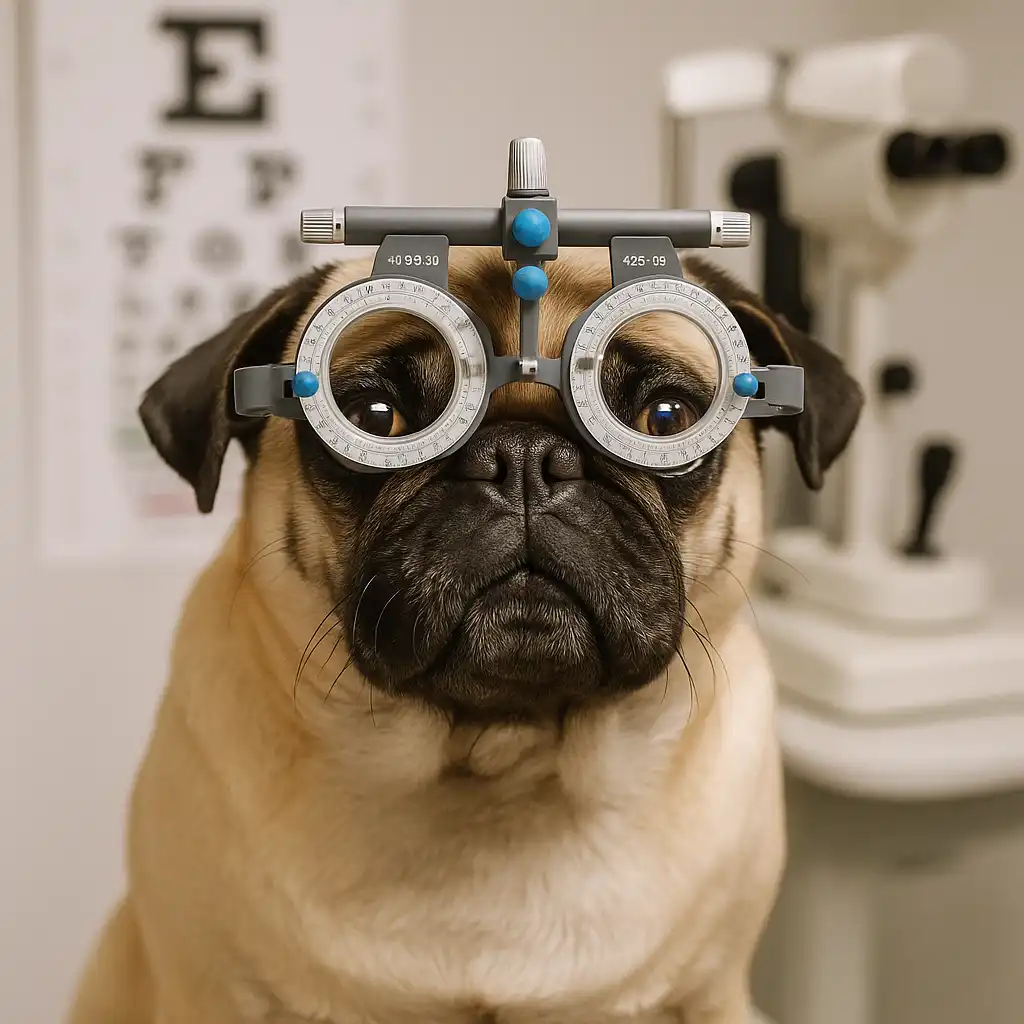Do Pugs Have Good Eyesight? What Those Big Eyes Are Really Seeing

Disclosure: This post contains affiliate links. As an Amazon Associate, I earn from qualifying purchases—at no extra cost to you.
Pugs are known for their wide, expressive eyes—and they’re not just for show. Those big eyes tell a lot about how these dogs see the world. But behind the cuteness, pugs can struggle with several vision-related quirks, especially as they age.
Their eye structure, common health conditions, and sensitivity to injury can all affect how well they see, and how you care for them matters just as much as what they were born with.
Why Eye Shape Plays a Role in Vision
Pugs are a brachycephalic breed, which means they’ve got short snouts and shallow eye sockets. This gives them that sweet, smooshy face—and eyes that tend to stick out more than most.
While this setup can give them a wide field of view, it also means their eyes are more vulnerable to dryness, injury, and irritation. Their depth perception isn’t always great either, which is why some pugs might misjudge a step or hesitate on unfamiliar surfaces.
According to many experienced pug owners, these quirks show up more often in older pugs or in dimly lit areas.
Common Vision Issues in Pugs
Because of their eye anatomy, pugs are more likely to deal with certain eye problems. Some of the most common ones include:
- Dry eye (keratoconjunctivitis sicca): Causes reduced tear production and leads to irritation and blurred vision.
- Corneal ulcers: These can form after minor trauma or rubbing and may require vet treatment.
- Pigmentary keratitis: A slow buildup of dark pigment over the eye, which can gradually limit vision.
- Entropion: When the eyelid rolls inward and lashes rub against the eye, causing discomfort or damage.
Many of these conditions can be managed or treated when caught early, so regular eye checks are key.
Signs That Your Pug’s Vision Might Be Off
If your pug’s eyesight is declining, you’ll probably notice changes in how they move around or interact with their environment. Here are a few red flags:
- Bumping into furniture or doorways
- Trouble with stairs or jumping onto furniture
- Squinting or pawing at the eyes
- Redness, discharge, or cloudiness
- Hesitation in dim lighting or new spaces
Some pug owners also mention that their dogs become more clingy or cautious when their vision isn’t 100%.
Simple Eye Care Tips That Make a Difference
Taking care of a pug’s eyes doesn’t require anything fancy—just consistency. Tips often shared in pug forums and communities include:
- Gently wipe around the eyes daily to remove debris
- Avoid car rides with their head out the window
- Use a harness instead of a collar to protect the eye area
- Keep the furniture layout consistent to prevent bumps and confusion
A small nightlight can also help a pug navigate dark hallways or stairs during nighttime bathroom trips.
Conclusion
While pugs don’t always have perfect vision, most get by just fine with a little extra care. Their unique eye structure means they’re more prone to issues, but regular checkups, gentle cleaning, and awareness of the warning signs can help keep their sight in good shape.
If you notice changes in your pug’s behavior or vision, don’t wait—checking in with a vet early can prevent long-term issues.






